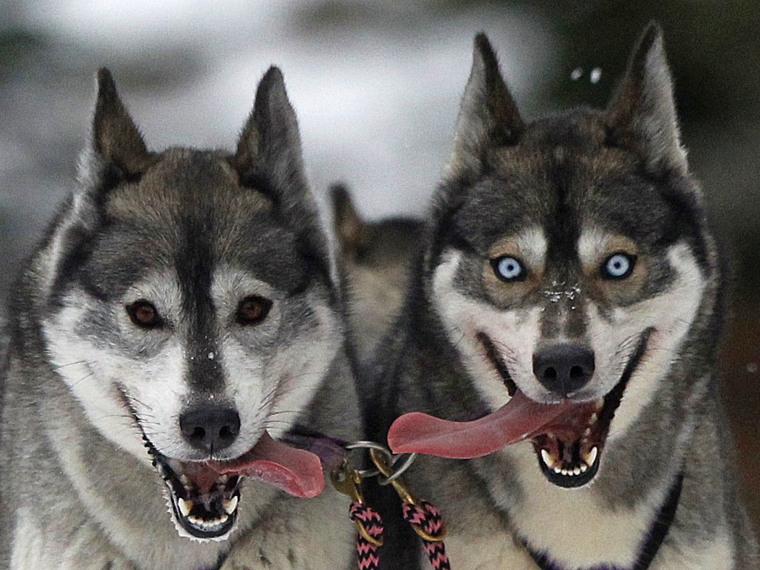In the early years after man befriended and domesticated dogs, some 11,000 years ago, one pet pooch developed an infectious cancer. It probably started out in the blood, and likely killed the poor animal. But unlike most forms of cancer which aren't contagious, this exact strain lives today.
Dogs around the world can become afflicted with canine transmissible venereal tumor — one of only three known contagious cancers — passed around when dogs have sex, or lick another infected dog and carry away tumor cells.
"It’s a cancer that’s really a parasite," Elizabeth Murchison, the lead author of a new analysis of CTVT published in the Thursday issue of Science.
To better understand how this unusually resilient cancer spreads, and trace the origins of other cancers, Murchison and colleagues sequenced tumor samples taken from infected animals from distant corners of the world: an American cocker spaniel from Brazil and an Aboriginal camp dog from northern Australia.
The analysis indicates that the father, or mother, of the cancer was a medium to large dog with a pointy snout and ears, an agouti or dark coat, perhaps related to an Alaskan malamute or husky.
Cancers arise from rogue cell growth triggered by mutations in their host, and tumor cells that accidentally enter another host are usually taken down by the new host's immune system. But CTVT has made a career of bypassing new host animals' defenses, sprouting nasty tumors in their sex organs for thousands of years. "'Super cancer' is a good designation," Murchison said.
Humans may be at least partly to blame for the birth of this traveling scourge. The new research adds to evidence that oldest, and most successful cancer line known to science arose as unfortunate fallout of befriending humans.
Because they only interacted with other dogs that were around human companions, the first domestic dog populations were "incredibly inbred," Clare Rebbeck, a CTVT and cancer researcher at Cold Spring Harbor Labs in New York, told NBC News. Inbreeding offers opportunities for odd mutations to take root, and "this limited interaction would have allowed the cancer to develop," Rebbeck, who was unconnected with the new report, explained.
Scientists suspected that a virus or a bacteria was helping spread the disease, but confirmed in 2006 that the tumor cells themselves were the agents of transmission.
Another "immortal" cancer cell line, a human line called HeLa, lives on in labs across the world, from a cervical tumor sample taken from a Virginia tobacco farmer Henrietta Lacks in 1951. But canine transmissible venereal tumor has been multiplying in the wild, unassisted, for thousands of years.
So CTVT, carrying DNA from the "that original dog that lived all those years ago," is now "living in thousands of dogs around the world," Murchison told NBC News.
Murchison, a researcher at the Department of Veterinary Medicine at the University of Cambridge has been studying contagious cancers for several years, beginning with the lethal, infectious cancer that is threatening populations of Tasmanian devils that inhabit her home town.
Though the devils' face cancer isn't older than 30 years, both infectious cancers arose in a non-diversified populations: in the marsupials, penned in on their island, and in the inbred population of dogs that first grew out the CTVT.
Because only one X chromosome has survived generations of travel and replication, the researchers can't tell if that animal was male or female. "Otherwise I would give it a name," Murchison said.
The disease has collected about two million mutations through the generations — human tumors usually have a few thousand — and the secret to how the line persists is likely among them, Murchison believes. Determining which of the mutations are crucial to the cancer's long life will be part of the next stages of this study. "We would really like to know how it evades the immune system," she said.
Human cancer sequencing projects have shown that tumors growing in people tend to have many different cell types, all competing with each other, which contributes to cancer's notorious ability to adapt around treatments. Compared to that, team was surprised to find a lack of diversity among the CTVT cells.
So it turns out you can't teach a new cancer old tricks: CTVT responds well to chemotherapy perhaps because it lacks the diversity to adapt.
In next stages of research, Murchison hopes to pinpoint the location that the cancer originated in. "It's kind of one of a kind," she said.
Nidhi Subbaraman writes about science and technology. You can follow her on Facebook, Twitter and Google+.
